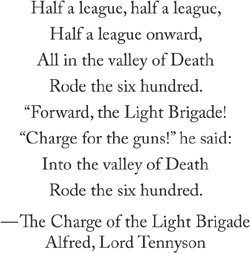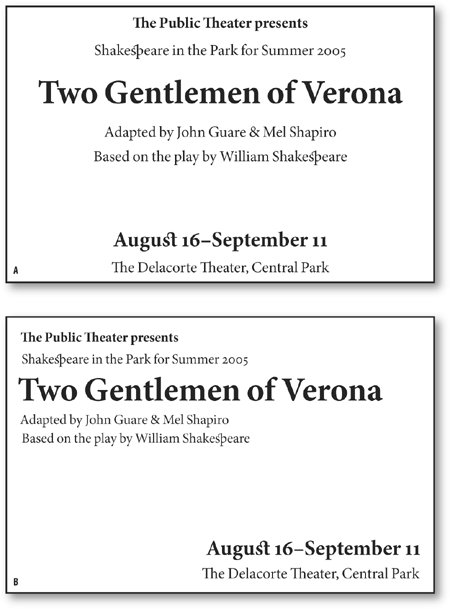Centering Type
Center alignment is widely used in magazine design for crossheads and in book design for title pages. When chosen consciously centering can be extremely effective; when chosen as a "default" or fall-back option, it can make layouts appear stodgy or generic. At its best, it is formal and classical; at its worst, it is static and conventional, andif you are centering whole paragraphsit is less readable. The potential pitfall of centered type is that the even amount of white space on either side of the heading can create a symmetry that may be at odds with asymmetrical nature of the ragged right text. Centering is also commonly associated with birth announcements, wedding invitations, and…gravestones. Guidelines for Centering Type
|










